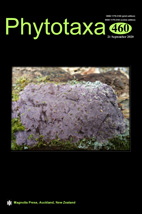Abstract
A new saprophytic fungus, Pleurotus sirindhorniae, is described based on collections from northern Thailand. This species is characterized by greyish yellow to olive brown pileus, ellipsoid to elongate basidiospores and clavate to mucronate cheilocystidia. It is distinguished from the previously described Pleuotus species by its distinct morphological characteristics. Molecular phylogenetic analyses of the large subunit (LSU) and internal transcribed spacers (ITS) of the nuclear ribosomal DNA (rDNA), the translation elongation factor 1-alpha (tef1) and the RNA polymerase II largest subunit (rpb1) genes also support P. sirindhorniae as a distinct new species within the genus Pleurotus. A full description, color photographs, illustrations and a phylogenetic tree to show the position of P. sirindhorniae are provided.

